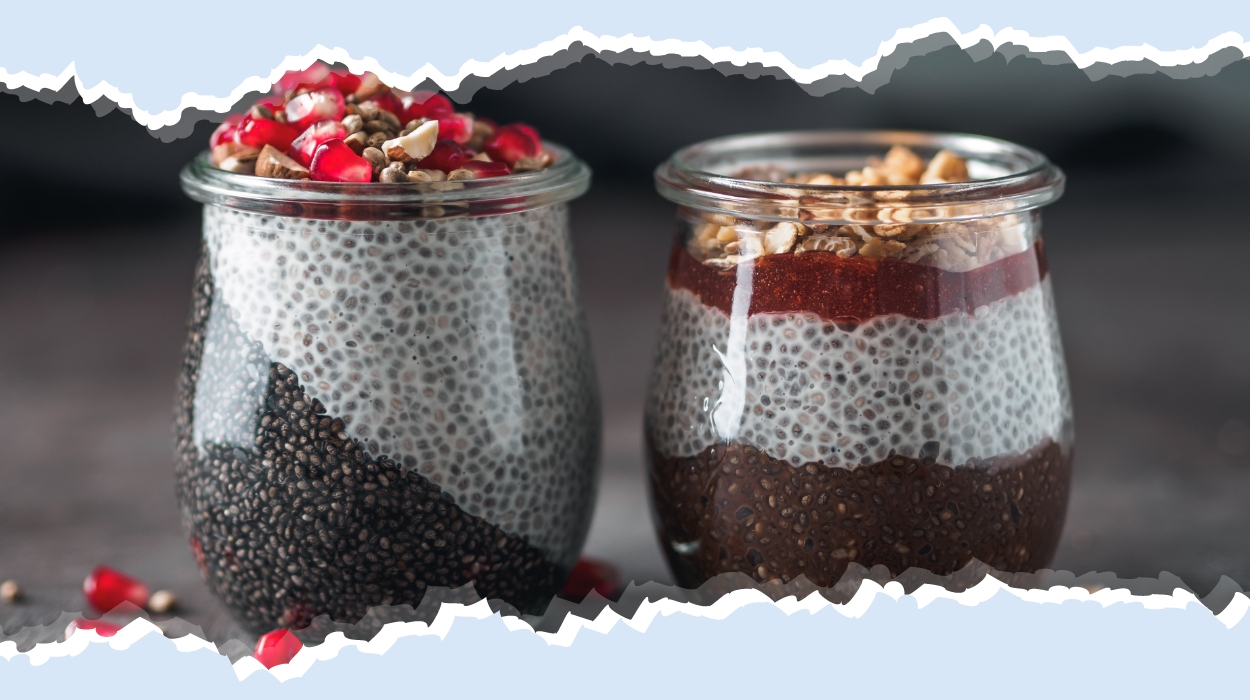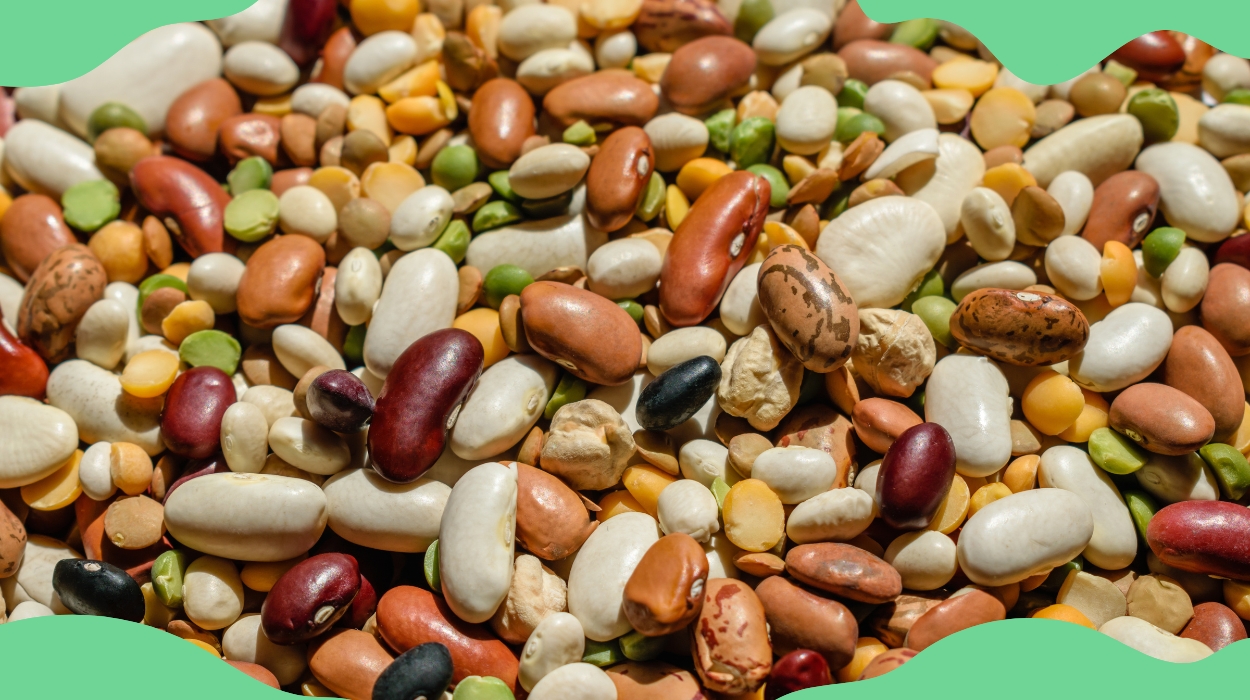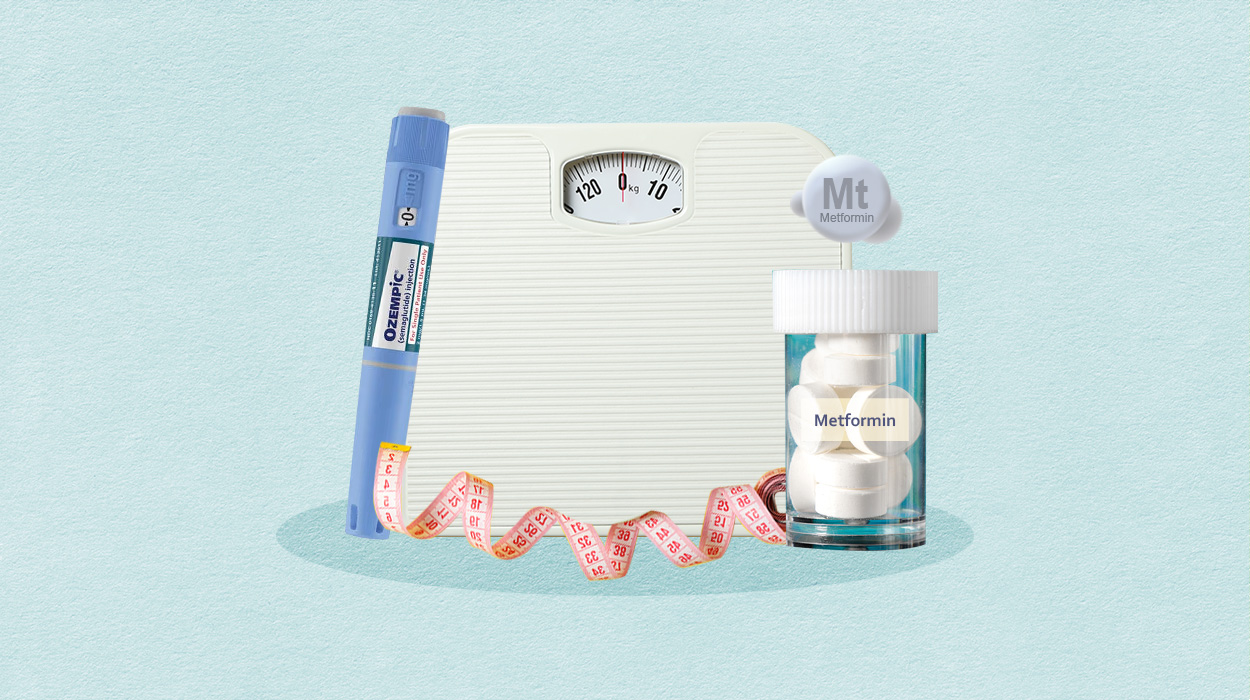What Do Chia Seeds Taste Like? Understanding The Flavors & Textures

Chia seeds have gained popularity as a nutritious food, because they are loaded with essential nutrients, including an excellent source of omega-3 fatty acids, fiber, and antioxidants. But what do chia seeds taste like?
Whether you sprinkle them on yogurt, blend them into smoothies, or use them as an egg replacement in baking, understanding their unique texture and flavor can enhance your culinary experience and will propel you to always incorporate them into your daily diet.
This article explores the various tastes and textures of chia seeds in different preparation methods and highlights the benefits they offer.
Let’s jump right into it.
What Do Chia Seeds Taste Like?
These tiny seeds are derived from the Salvia Hispanica plant, native to Mexico and Guatemala. They are an excellent source of fiber, omega-3 fatty acids, protein, calcium, and antioxidants. They have a mild nutty flavor and can be eaten raw, soaked, cooked, or ground. Chia seeds are versatile ingredients, as they can be added to different foods, including smoothies, yogurt, oatmeal, and baked goods.
What Do Chia Seeds Taste Like?
Chia seeds offer a distinct taste experience when paired with different preparation methods. Let’s take a look at them:
When Raw

Chia seeds in raw form have a mild flavor often described as earthy, and they offer a delicious crunch, adding a delightful texture to meals.
Its subtle raw taste allows it to be easily infused into different recipes without overwhelming other flavors. Their neutral flavor profile also allows people to add them on top of yogurt and smoothies or use them as a topping for salads.
When Soaked
When soaked in water, chia seeds develop a gel-like consistency and texture with an almost flavorless taste. This neutrality in taste makes it easier to be incorporated into different dishes without altering their overall flavor.
One of the benefits of chia seeds in water is that this process unlocks the high fiber and omega-3 content, which helps promote digestive health[1].
Thus, you can enjoy their versatile nature by infusing chia seeds into sweet and savory dishes.
When Cooked
When chia seeds are cooked, their taste profile changes into a toasted flavor. The reason is that cooking softens the seeds and promotes their nutty essence.
Cooked chia seeds infuse a delightful depth to dishes, with a slight earthy and nutty taste that enhances the overall flavor profile. Depending on the ingredients they are combined with, chia seeds can absorb and complement other flavors in the dish.
Their versatile nature makes them perfect for different recipes, whether baked goods or stovetop dishes. Overall, cooked chia seeds provide a satisfying taste experience compared to their soaked or raw form.
When Ground
Ground chia seeds have a nutty flavor that is intensified compared to their whole seeds form. The grinding process releases their natural oils, which improves their taste profile.
Thus, grounded chia seeds contribute delicious richness to dishes, resembling the essence of seeds and nuts. With their robust taste, ground chia seeds provide a unique and satisfying culinary experience, allowing you to infuse their nutritional benefits into dishes while amplifying the overall flavor of your recipes.
Other Seeds That Share A Similar Taste
While chia seeds offer a distinct flavor, other seeds possess a similar taste profile. These alternative seeds are also an excellent option for adding texture and flavor to different recipes.
Understanding the taste characteristics of chia seeds can inspire new recipes and creations. They include:
Poppy Seeds
Poppy seeds share a similar taste profile to chia seeds. They offer a mildly sweet and nutty flavor with a hint of earthiness. They have a delicate crunchy texture, which is quite pleasant when bitten into.
Poppy seeds are often used as topping for baked goods, such as pastries, muffins, and bread, where their texture and flavor complement the overall taste profile.
Additionally, they can be added to sauces, fillings, and dressings to enhance the culinary experience with their subtle taste. Poppy seed consumption has been proven to relieve asthma, constipation, and cough[2].
Flax Seeds
Flax seeds also have a nutty yet distinct flavor similar to chia seeds. They are suitable for people who are allergic to soy and gluten[3]. They offer a wholesome taste that adds more depth to dishes. While their taste is subtle, you can still detect it when eaten raw or incorporated into recipes.
When ground, flax seeds release their oils, intensifying their nutty taste. They can be used in many dishes, including smoothies, oatmeal, and baked goods.
Their flavor pairs with both savory and sweet dishes, making them a versatile ingredient.
Sesame Seeds
These seeds have an aromatic taste profile. Studies reveal that they have cholesterol reduction and antioxidant properties[4].
They offer a nutty, delicate, and sweet earthy flavor. They also have a rich, toasty essence due to their high oil content, contributing to their unique taste.
When toasted, their flavor becomes robust. They are commonly used as topping for cuisines, salads, baked goods, desserts, and stir-fries.
Pumpkin Seeds
Pumpkin seeds, known as pepitas, have a nutty and slightly sweet taste. They are a natural source of omega-3,6, and 9 acids, proteins, and other essential fatty acids. Studies show these seeds can improve sexual health[5].
These seeds’ subtle buttery undertone adds depth to their flavor profile. Pumpkin seeds can be enjoyed individually as a snack or included in salads, granola bars, and trail mixes.
What To Eat Chia Seeds With?

Due to their versatility, chia seeds can be incorporated into a wide selection of dishes to boost their nutritional value. Wondering how to eat chia seeds? Take a look at the options below:
Smoothies
Smoothies offer a fantastic opportunity to infuse chia seeds into your diet. You can add chia seeds to enhance the texture of the smoothies and boost their nutritional value.
When added to smoothies, these edible seeds absorb the liquid and become gel-like, which creates a thicker consistency. To include chia seeds into your smoothie, you must blend them with other ingredients.
The result will be a nutrient-packed delight in a refreshing form.
Yogurt & Puddings
You can also infuse chia seeds into yogurt or chia pudding. When added to yogurt, chia seeds bring a delightful texture to the yogurt’s smooth consistency. And because they are loaded with fiber, protein, and omega-3 fatty acids, chia seeds enhance their nutritional content.
These seeds can be utilized into making chia pudding, a quick pick-me-up. Ingredients used in making this satisfying dessert include almond milk, honey, and chia seeds.
- Add the milk into a jar and sprinkle the chia seeds inside.
- Stir the milk and seeds together, and drizzle honey or any other sweetener of choice.
- Stir again until there aren’t any clumps left.
- Cover and refrigerate the pudding for at least 2 hours or overnight.
Oatmeal Or Cereal
Adding chia seeds to your oatmeal or cereal is an incredible way to boost the nutrients in your breakfast. Chia seeds can complement the flavors and textures of these dishes, creating a satisfying and wholesome meal.
Chia seeds contribute a delightful crunch and subtle nutty flavor when added to oatmeal. They can be mixed into the cooked oatmeal or sprinkled on top for added texture.
Similarly, including chia seeds in cereal adds a pleasant crunch and an extra layer of nutrition. Whether you enjoy cold cereal or granola, sprinkle chia seeds on top to enhance the texture and taste.
Baked Goods
Chia seeds can be a fantastic addition to baked goods, adding nutritional value and a delightful texture. They can be added to various recipes, such as muffins, cookies, bread, and even pancakes.
Salads
These seeds can add a nutritious and textural element to salads, making them more filling and satisfying. They offer a subtle crunch and flavor that complements various salad ingredients.
To incorporate chia seeds into salads, sprinkle them over the top or mix them into the dressing.
Conclusion
Chia seeds are a versatile and nutritious ingredient that can enhance various dishes. Their taste, texture, and nutritional benefits make them valuable to various recipes.
Whether consumed raw, soaked, cooked, or ground, chia seeds offer a unique flavor profile characterized by a mild nuttiness and a satisfying crunch.
So, if you want to add a nutritional boost to your meals, consider incorporating chia seeds and enjoy their unique taste and benefits.
Frequently Asked Questions
They can be eaten raw, soaked, cooked, or ground.
Flaxseeds, sesame seeds, and pumpkin seeds share similar taste profiles.
They can be added to smoothies for added nutrition and texture.
They are rich in dietary fiber, protein, omega-3 fatty acids, and various essential nutrients.
Some chia seeds side effects include digestive discomfort, allergic reactions, and high fat intake.
They are naturally gluten-free and can be enjoyed as a gluten-free diet.
These seeds can be used as an egg substitute by mixing 1 tablespoon of chia seeds with 3 tablespoons of water and allowing it to gel.
They are beneficial for weight loss, as they are high in fiber, which helps promote feelings of fullness.
Resources
- Costantini, L., Molinari, R., Farinon, B. and Merendino, N. (2017). Impact of Omega-3 Fatty Acids on the Gut Microbiota. [online] 18(12), pp.2645–2645. doi:https://doi.org/10.3390/ijms18122645.
- Krošlák, E., Tibor Maliar, Nemeček, P., Viskupicova, J., Mária Maliarová, Havrlentová, M. and Ján Kraic (2017). Antioxidant and Proteinase Inhibitory Activities of Selected Poppy (Papaver somniferum L.) Genotypes. [online] 14(9), pp.e1700176–e1700176. doi:https://doi.org/10.1002/cbdv.201700176.
- Parikh, M., Maddaford, T.G., J. Alejandro Austria, Aliani, M., Netticadan, T. and Pierce, G.N. (2019). Dietary Flaxseed as a Strategy for Improving Human Health. [online] 11(5), pp.1171–1171. doi:https://doi.org/10.3390/nu11051171.
- Wei, P., Zhao, F.-L., Wang, Z., Wang, Q., Chai, X., Hou, G. and Meng, Q.-G. (2022). Sesame (Sesamum indicum L.): A Comprehensive Review of Nutritional Value, Phytochemical Composition, Health Benefits, Development of Food, and Industrial Applications. [online] 14(19), pp.4079–4079. doi:https://doi.org/10.3390/nu14194079.
- Shaban, A. and Sahu, R.P. (2017). Pumpkin Seed Oil: An Alternative Medicine. [online] 9(2). doi:https://doi.org/10.25258/phyto.v9i2.8066.
More from Diet
-

What Do Chia Seeds Taste Like? Understanding The Flavors & Textures
June 29, 2023
Chia seeds have gained popularity as a nutritious food, because they are loaded with essential nutrients, including an excellent source of…Read more -

Recipes With Chia Seeds: 8 You Should Try Right Away
June 28, 2023
If you have heard about the incredible power of chia seeds for weight loss, you are in for a treat! These…Read more -

Can You Eat Beans On Keto? The Ultimate Guide
June 26, 2023
Beans are a staple food in many cultures across the globe. This is not a coincidence, since it’s mainly for their…Read more




